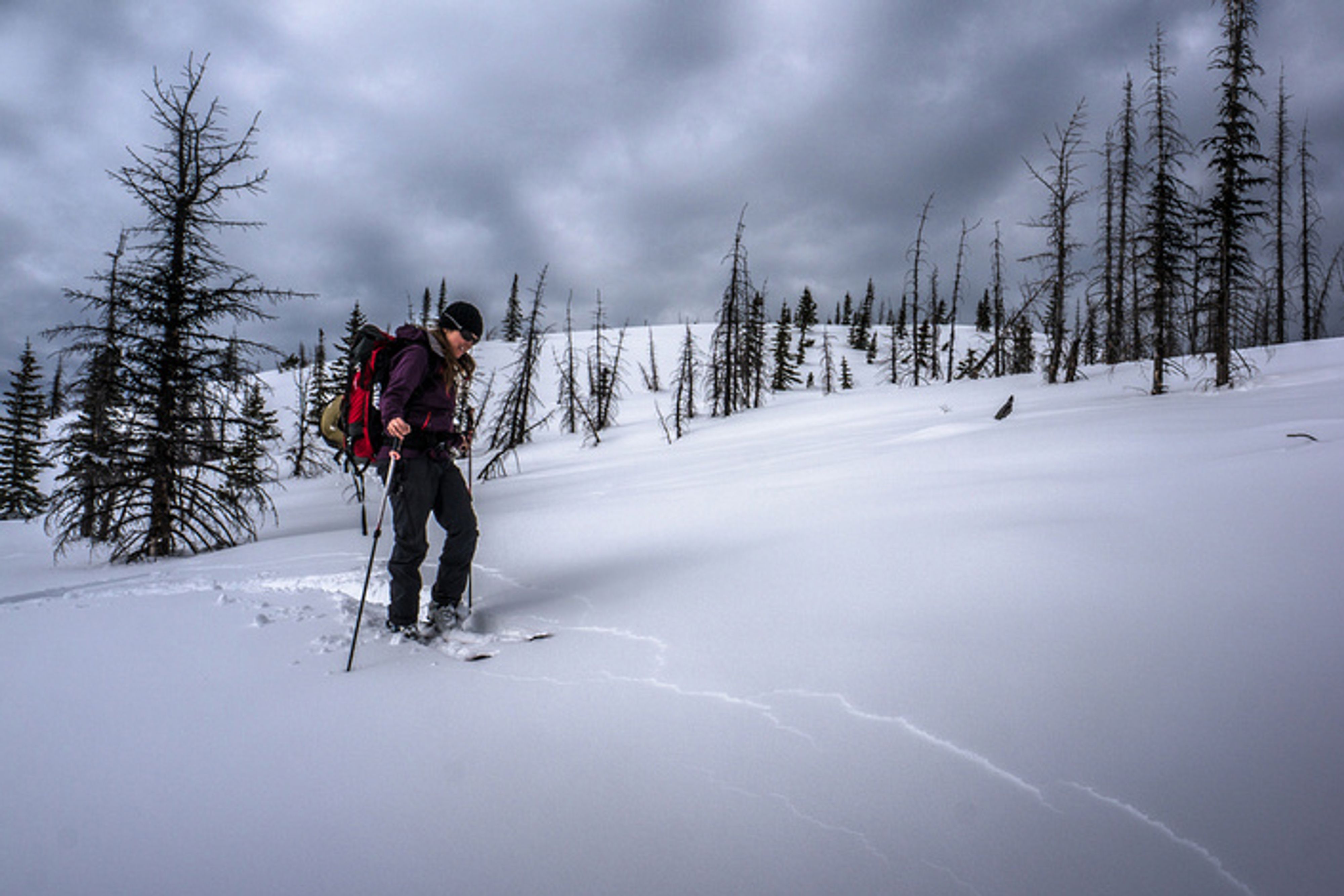Signs of Instability
As you travel through the backcountry, keep an eye on conditions around you. The signs below indicate that avalanche hazard is elevated. Keep in mind an absence of signs of instability doesn’t mean an absence of instability—particularly in cases of persistent slab and deep persistent slab avalanche problems.
Drifting Snow

Is the wind picking up? Watch for wind-transported snow that can put extra load on lee slopes (slopes on the opposite side of the wind direction). Those wispy clouds at the ridgetop in this image are actually plumes of snow being transported over the ridge by wind. The slope where that snow lands will become loaded and more prone to avalanches.
Shooting Cracks

Whumpfing (the sound of snow collapsing) and shooting cracks indicate the snowpack is primed for avalanches, given a sufficiently steep and open slope.
The slope in the photo isn't steep enough to avalanche, but the cracking is a sign that a slab has formed and that steeper slopes in that area are primed for a slide and should be avoided.
Recent Slab Avalanches

Recent avalanche activity (from within the past 48 hours) is a reliable sign of instability. Take note of the slope aspect and angle as the odds are good that avalanches will occur on similar slopes.
Snowing Heavily

If it’s snowing hard—more than 2 cm an hour—for a few hours, you can be sure the avalanche danger is going up.
Warming

Rapid warming, either by solar radiation, warm wind, or rain, will also increase the avalanche danger.